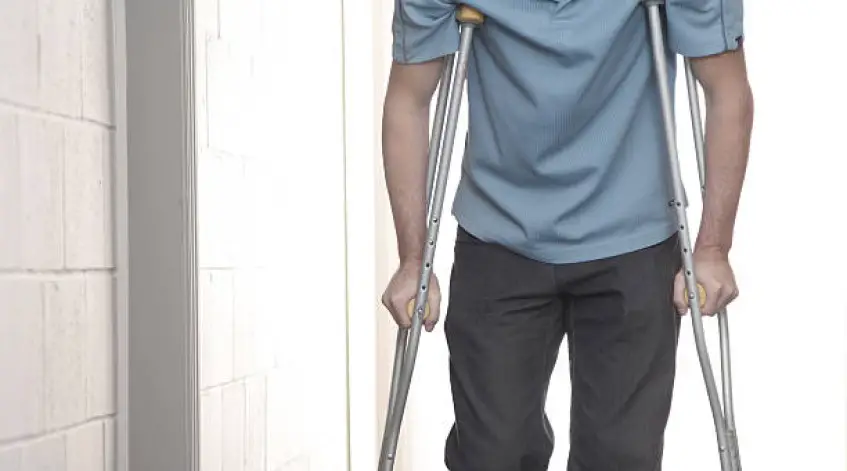The major reason why people use mobility aids is to be able to move around easily when mobility becomes difficult or impossible without support.
Mobility devices are divided into 3 categories based on their functions.
The first category is designed for people who can walk on both feet without support but need assistance to navigate around. The second category is for people who can walk but need support to be stable and pain-free. And the third is designed for people who are completely unable to walk.
Each category has devices that can either serve a general or specific purpose.
Table of Contents
- What is a Mobility Aid?
- Types of Mobility Aids
- Benefits of Mobility Aids
- When to Use Mobility Aids
- Final Thoughts
What is a Mobility Aid?
A mobility aid is a device that is used by the disabled or people who have difficulty moving freely to move easily from one place to another.
They are of different types and are designed to suit different types of disabilities, injuries, and medical conditions. The type of walking aid needed by the blind, for example, is quite different from the type needed by the handicapped.
These aids give independence, stability, confidence, and self-esteem to their users. Above all, they enable users to move freely and go about their daily routine unassisted, which also improves mental and psychological well-being.
Related: Top 10 Text Readers for the Blind
Types of Mobility Aids
The following are the different types of mobility aids that are used by the elderly, disabled, injured, or people with other medical conditions that caused mobility disability.
Cane
Canes are mobility walking sticks that are used for support by holding the top while the base touches the floor. They are used by individuals who can walk but require extra support for easy mobility. And they’re of different types; white canes, folding canes, quad canes, adjustable canes, forearm canes, tripod canes, and shillelagh.
Canes generally relief your legs off the burden exerted on them by your body weight. They are used by the visually impaired to perceive information about the ground and easily navigate around.
The type of cane you should use greatly depends on the purpose of use. It is recommended to get medical advice from a professional before making a decision.
Crutches
Crutches hold on more weight than canes. They are typically used by people who are unable to work on both feet without support. This can be caused by a temporal or permanent disability. The different types of crutches available include axillary or underarm crutch, platform crutch, forearm crutch, and leg support.
These crutches are often administered to users depending on their injury, illness, and disability. The platform crutch, for example, is usually used by people who have a weak hand grip due to conditions like cerebral palsy or arthritis. The underarm crutch, on the other hand, is mostly used by patients who have a temporal injury and have difficulty walking on their feet.
Gait Trainers
Gait trainers are devices that are used by people with disabilities to relearn how to walk. This could be as a result of conditions like cerebral palsy, traumatic brain injury, spina bifida, or developmental disabilities. They are also used by children to learn how to walk.
Gait trainers help to improve walking abilities than wheelchairs. They were originally designed to be used by children in the 1980s but were later improved and administered to adults mostly during therapy sessions.
When patients improve their walking abilities after using gait trainers, they can switch to using crutches and then canes before they finally start to walk without any support.
Guide Dogs
These are trained dogs that are used by the blind or visually impaired to navigate around. They are specially trained for this purpose mostly by organizations or owners alongside professional trainers.
A guide dog is like a pilot that takes the owner wherever the owner wishes to go. It’s a very important guide, especially in places where the owner isn’t familiar with. Having a guide dog is far more preferred than using canes. And it is psychologically more helpful.
The breeds of dogs used for this purpose are selected for their trainability and temperament. The most commonly used breeds are Labradors, Golden Retrievers, and the crossbreed of both.
Mobility Scooters
Mobility Scooters are scooter versions for the disabled. They’re like wheelchairs but look more like scooters than wheelchairs. The scooters are designed with a seat and run on either 3, 4, or 5 wheels. Some are battery-powered while others are gasoline-powered. But the gasoline-powered ones are now being replaced with modern battery-powered scooters.
Mobility scooters also come with a steering tiller for control. They are great for people with disabilities that can sit upright, walk short distances, and handle the steering tiller.
There are two major types of mobility scooters; the front-wheel-drive and the rear-wheel-drive. The front-wheel-drive scooters are best for indoor purposes while the rear-wheel-drive scooters are suitable for both indoor and outdoor use.
Stairlifts
Stairlifts are designed to help the elderly and individuals with disabilities to navigate the stairs easily. The system usually comprises a rail and a chair. The rail is firmly attached to the treads of the stairs and the chair is placed on the rail such that it can go up and come down. This makes navigating the stairs a very easy process.
Stairlifts are of different types. They include straight-rail stairlifts, outdoor stairlifts, curved-rail stairlifts, and vertical platform stairlifts. There are other types but these are the major ones used by the elderly and disabled.
Straight-rail stairlifts are the most common types used in homes. It is the least expensive and installing it is quite easy compared with the other types.
Walkers
A walker is a constructed frame designed to give stability and aid mobility. Walkers usually have 4 legs (2 front and 2 rear legs) and may or may not have wheels at the front. They are usually lightweight and sturdy enough to withstand the weight of the user.
The different types of walkers are rollators, walker cane hybrid, zimmer frame, and disabled dog walker. While the first 3 are used by humans, the last type is designed for dogs.
Rollators and zimmer frames are the most common types. Zimmer frames are more basic and lighter than rollators. They are smaller and more portable.
Wheelchairs
Wheelchairs are chairs used for movement by the disabled or when walking on the feet is not possible. The chairs come with 2, 3, or 4 wheels. There are a variety of wheelchairs categorized according to their purposes, mode of operation, and so on.
Some are designed for daily use while others are designed for special purposes. The wheelchairs used for sports are specially constructed to be used for a particular type of sport.
Wheelchairs used to be propelled manually by the user or an attendant who pushes from behind. Nowadays, there are modern wheelchairs known as electric wheelchairs or powerchairs that are propelled using electric motors and batteries.
Related: 4 Best Types of Crutches
Benefits of Mobility Aids
There are a lot of benefits derived from using mobility aids. Here are some of them.
1 Stability in Movement
The major reason why people use mobility aids is that movement is either impossible or difficult for them without support. With the aids, they will gain stability and move around with ease. Walking aids like gait trainers, which are helpful for learning or re-learning how to walk, give stability when used over time.
2 Increased Confidence and Level of Independence
Mobility aids give you the stability you need, which increases your confidence level. You also become more independent since you’ll be able to get things done without the help of others.
3 Easy Navigation
Mobility aids devices offer users the opportunity to easily navigate from one position to another whether indoor or outdoor.
4 Quick Recovery
Walking aids are also used by individuals who sustain injuries or have a medical condition that requires them to temporarily get support to navigate easily. This helps them to reduce the weight and burden exerted upon the affected part of the body, which helps in having a quick recovery.
When to Use Mobility Aids
Generally, it may be a tough decision to switch from walking around without support to moving with mobility aids. This may sometimes be interpreted as giving in to the disease. But in reality, this isn’t something to be ashamed of.
You know it’s time to start using a mobility aid when you keep experiencing frequent falls. This may be due to old-age or a medical condition that makes you unstable.
If you’re a senior citizen, consider using them when you easily become exhausted and experience pains in your joints or other parts of your body after short walks.
It is recommended that you consult professional medical personnel for expert advice on the type of mobility aid to use.
Final Thoughts
Mobility aids generally improve mental and psychological well-being among other things. They help to navigate freely and unassisted from one point to another. They give the freedom to move around and go about daily routine just like every able-bodied person. Finally, it’s very important to use the right type of mobility aid to reduce health risks.
Compare Mobility Aids
- Top 4 Recommended Types of Crutches
- 10 Best Free Software for Visually Impaired Students
- Top 10 Text Readers for the Blind
- Best Mobility Aids Walkers for Easy Mobility
- 9 Best Disability Products for Seniors
- List of Baby Products for Disabled Parents
- Best Kitchen Tools for Onehanded
- Hemi Height Wheelchair vs. Standard Wheelchair: Here’s the Right One to Choose
- Group 2 vs. Group 3 Power Wheelchair: Here’s the Right One to Choose
- Steps and Techniques of Properly Securing a Mobility Device
- How to Easily Make Your Crutches More Comfortable (DIY Guide)
- What is a Mobility Hearing Accessible Room? (Answered)




